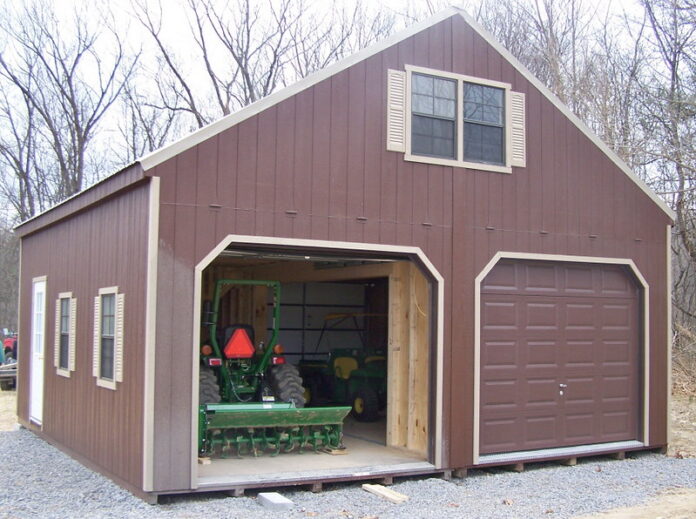Electricity is one of the biggest obstacles to remodeling or relocating into your garage. You almost always wish you had more outlets, whether you want to use your carport to recharge your fully electric car or you want to transform it into the optimal workshop or hangout area.
The Price of Installing Circuits in a Garage
Although the price can vary, adding an extra outlet to your garage will typically cost between $100 and $1,000. The typical price is $350.
This will depend on the voltage and position of the outlets you intend to install, the current circuits, and, quite honestly, the cost of hiring an electrician.
Starting, most internet sellers will charge you between $10 and $25 for a primary outlet. The element of this transaction that is the least expensive is the outlet itself.
Next, you must factor in the price of ground wire. Depending on the type of wire you require, this will cost between $2 and $5 per foot. The cabling will cost you more the farther away your new outlet is from the circuits.
You would save a lot of money if the current circuits had adequate power to supply an additional outlet. Regrettably, this is not always the case. Depending on the voltage you require, the cost of operating a new electrical panel will change.
A new 120V connection should cost between $150 and $250 to add to your current circuits. On the contrary hand, a 240V circuit typically costs between $300 and $800.
The electrician cost is the last expense you’ll need to consider.
It is advised to get a qualified engineer to set up your new garage outlets unless you have a lot of experience doing electrical work yourself. Costs for electricians can range from $100 to $250, depending on your location.
Read More: Kraft Pillow Boxes Wholesale are famous as the most user-friendly boxes
How high in a garage should outlets be?
Garage outlets must be conveniently located. Unless you intend to climb a ladder each time you need to put in a drill, an outlet won’t be much use on the ceiling.
In a garage, there are no particular height restrictions for outlets. However, the standard procedure is to place each outlet no higher than 5’6″ above the floor and no less than 18″ above the ground.
In general, most garage buyers will prefer outlets fitted within those restrictions. According to their intended functions, these are the typical heights for garage outlets.
- Table presses: 18–20 inches; Water Heaters: 18 inches; Washers and Dryers: 34–36 inches
- 30-36-inch drill presses
- 48-inch refrigerators and freezers
- The location of the plugs in your garage can ultimately be decided very freely.
A Short Guide to Garage and Outdoor Receptacles
Outdoor Containers
To provide a secure location to plug in an electrical cord, outside receptacle outlets must be put on both the back of a home. This reduces excessive extension cord lengths and inhibits people from running them through doorways (from inside to outside). According to the foundational regulation, a receptacle outlet must be located where it is easily accessible from grade and no higher than 6 12 feet above grade level. Both the front and back of the house are affected by this. GFCI protection, tamper resistance (TR), and weather resistance are all requirements for outdoor receptacles (WR).
Garage Containers
There isn’t any such issue as having just so many outlets in our garages for many of us. There appears to be room for a few more all the time. The code is only a minimal set of installation guidelines, though.
One receptacle outlet must be put in each car bay, and it cannot be installed higher than 5 12 feet from the ground. Both attached & freestanding garages that are powered by electricity must abide by this law.
The purpose of mandating a receptacles outlet in each car bay is to guarantee that any electric cars parked inside the garage have access to a charging station.
Functionality
By determining the type of tasks you will be performing in the garage, you can begin planning the location of electrical outlets there. Would you like your garage to serve as a workspace where you can work on your passion for hours? Perhaps you want it to serve as a storage space that doubles as an addition to your kitchen. It will be simpler to estimate the electrical usage of your garage if you first consider your needs and the method of gadgets wired to the plugs.
Use of Electricity
Since the overall load cannot be greater than your service rating, measuring the electricity usage is essential when planning the power for your garage. Always verify it in advance; in most circumstances, the house will require between 100 and 200 Amps. Consider an electrician about upgrading if your electrical hookups are inadequate for your needs.
Devices
The next item you should do is to list the gadgets you’ll utilize in your garage after you know what electrical service you’re dealing with. It would help if you had more outlets and more tools you operate. A washer, dryer, extra refrigerators, freezer, and other often-used appliances will be needed if you want the garage to serve as a storage space. Think tables, drill presses, chop saws, & similar gear if you desire your garage to double as a workshop.
Check the type of outlet and receptacle after making a list of all the appliances and power tools you’ll use. There will be exceptions, even though most of them will call for either a solitary or double socket type and a 20-amp receptacle.
To ensure your electrical work will function adequately, double-check the precise specifications for every tool before using it.






